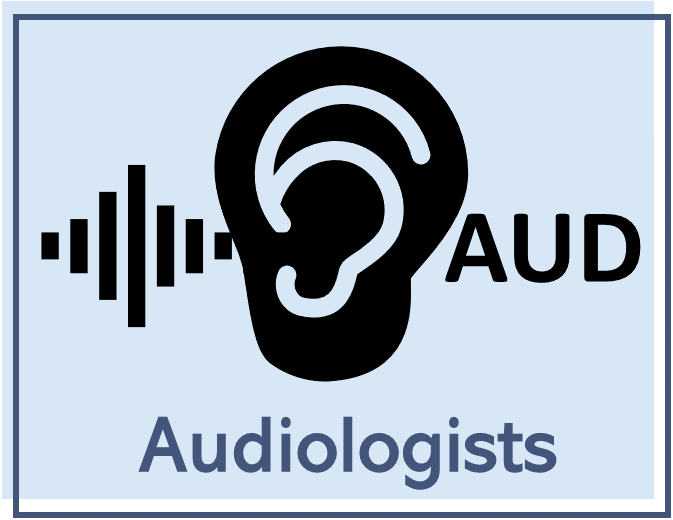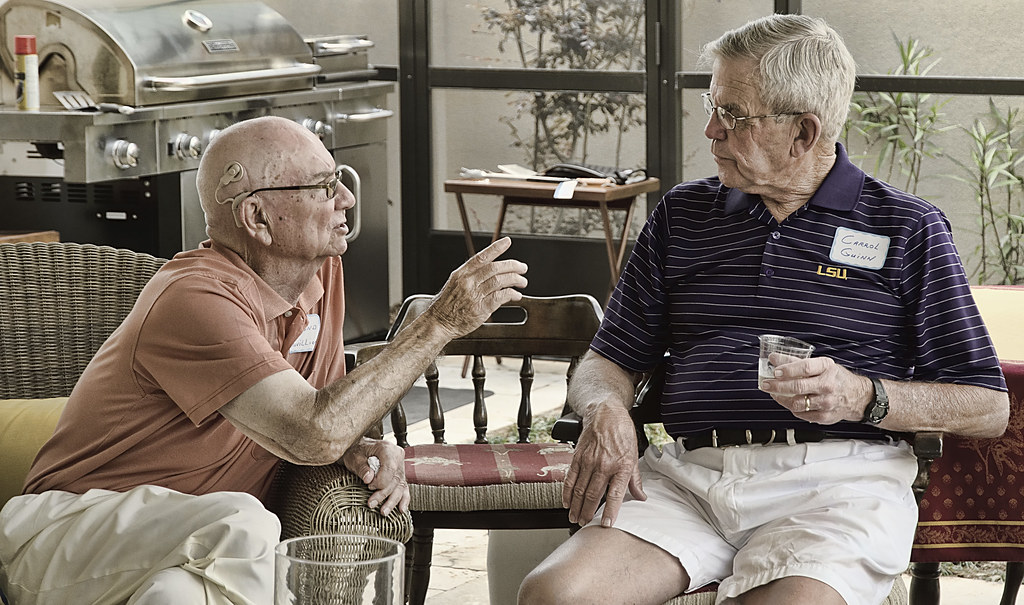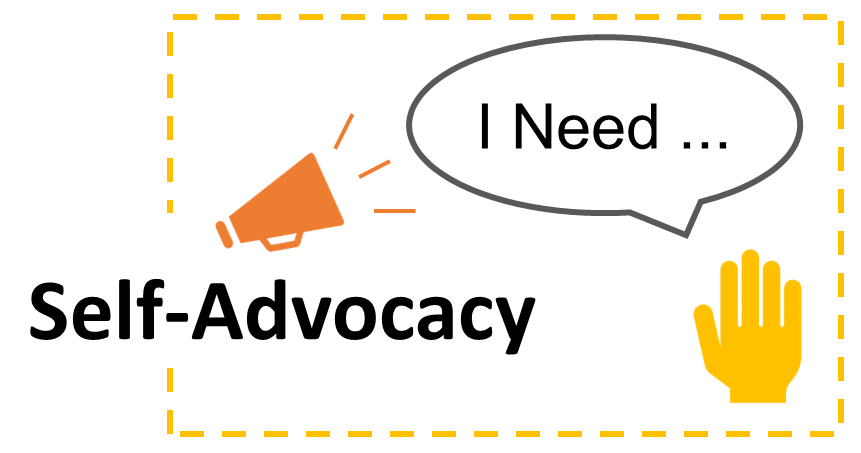See also: Articles on Music, Hearing Loss, and Hearing Devices
As you read this website, keep in mind the following:
-
People with hearing loss can differ in many ways.
-
Some information may be more applicable.
-
Pick and choose the information most useful for you.
Optimizing Music Experiences Through Self-Advocacy:
Information for Audiologists
1, 2
This page is primarily for hearing professionals. Click below to find information that may be useful for your patients:
What is self-advocacy?
Self-advocacy is the ability to articulate one's needs and make informed decisions about the necessary supports to meet those needs. Self-advocacy skills include knowing one's rights, developing self-awareness, being assertive, negotiating, and speaking up for oneself or a cause. Self-advocacy is an important skill that your patients use throughout their lives.
While self-advocacy is beneficial when negotiating many challenging situations in everyday life, this webpage emphasizes situations involving music, given that many audiological resources focus on spoken communication.
Why is self-advocacy important for your patients in their experiences with music?
Music tends to be poorly conveyed through cochlear implants and hearing aids, and experiences with music often include complex combinations of music and speech. Self-advocacy begins with patients' understanding of their own hearing loss and the way it impacts their experiences with music either directly or indirectly. Below are some challenges patients may face in their daily lives:
-
Social situations that involve music are often unavoidable. These include social events, public places (e.g., restaurants, bars), religious services, and other everyday experiences.
-
Situations that involve music combined with speech make both music and speech difficult to understand.
-
Background music requires greater listening effort; paying attention to speech while music is playing in the background can be frustrating and exhausting. (Click here to learn more about how background music impacts verbal communication)
-
-
Your patients may avoid social situations with background music, which can lead to social isolation.
-
Your patients may need accommodations to understand and enjoy what they hear.
-
Self-advocacy skills empower them and enhance their personal satisfaction with music.
Here are some frustrations that occur in music experiences shared by some cochlear implant users:
It is very difficult to understand and carry on a conversation when music is playing at a restaurant or social environment.
When I go to a location that has music during a function (example wedding), music sounds like background noise to me. I cannot enjoy both music and conversation together.
I find I have stopped going to music events where there is singing as I cannot understand the words and if I don’t know the song, I really can’t tell what’s being sung, and I wind up sitting in misery for a couple of hours. Really cuts into my social life as there are many music events in the Senior gated community where I live but I’m not able to participate..
For most people, an audiologist is the first hearing care provider they see. While family and friends provide important support for people with hearing loss, audiologists play paramount roles in helping patients build courage, learn how to utilize their new devices, and embrace this phase of life.
Self-advocacy can be important in managing many life situations, especially complex listening situations that include music or music mixed with speech.
How can audiologists help foster self-advocacy in patients?
-
Counsel patients to increase their self-knowledge:
-
Check your patients’ understanding of their hearing loss and how it affects spoken and musical communication in different environments.
-
Counsel and educate patients and families/caregivers on the psychosocial adjustments of hearing loss. (Click here to learn more about psychosocial adjustments of hearing loss.)
-
Help your patients identify barriers to effective listening, including music listening or coping with background music. Click here to view information about music enjoyment and background music.
-
Share resources related to hearing loss/hearing-related issues and music.
-
Click here to view patient education handouts created by the American Speech-Language-Hearing Association. You can print handouts or share internet links with your patients and their families.
-
Click here to view information about hearing loss and music. You can share the links with your patients and their families.
-
-
-
Educate patients on their needs and focus on hearing solutions specific to them:
-
Determine your patients' priorities.
-
Attend live concerts frequently?
-
Dine out often?
-
Go to movies regularly?
-
Other?
-
-
Identify which professional or personal listening situations your patients find most problematic.
-
Experiences trouble hearing in public settings where a competing noise is present (e.g., movies, bars, or cafes)?
-
Finds particular elements of music unpleasant (e.g., lyrics, high-pitched instruments, loud music)?
-
Doesn't know how to use FM Loops in public venues?
-
-
The more you know about your client’s priorities and difficult listening situations, the more appropriate solutions you can offer.
-
-
Help patients set realistic expectations for experiences that involve music:
-
Talk with your patients prior to implantation about the problems and successes that hearing device users face when listening to music.
-
Help patients to understand how HA or CI technology affects music perception. (Click here to learn more about CI technology and music)
-
Emphasize that music listening can improve; however, effort and time are required both from hearing device wearers and from audiologists to attain optimal listening.
-
-
Introduce a variety of practical methods that your patients can use for the best listening experiences:
-
Demonstrate how to manipulate hearing devices in a variety of situations related to music (e.g., loud bars, cafes with background music, concert halls, wedding venues, etc.).
-
Introduce and demonstrate assistive listening devices that patients can use in different listening environments.
-
Recommend and provide audiologic rehabilitation—including speech reading, communication management, visual cues, non-verbal cues, and auditory skill development.
-
-
Encourage flexibility to explore what "fits:"
-
Encourage patients to experiment and learn about accommodations that work best for them.
-
Emphasize that there is no one solution for all people or for all places.
-
-
Include the family in appointments:
-
Help patients and families understand that hearing loss impacts the entire family.
-
Including family members in appointments can help them better understand what communication challenges are most pressing for the patient and what tactics can offset those challenges.
-
Consider playing some simulations of how music sounds through a cochlear implant (click here) or hearing aid to help them better understand the problems faced.
-
-
-
Encourage both patients and family members to ask for the assistance they need.
-
Experiment with different assistive listening devices.
-
Provide family members with links to websites or handouts on hearing loss, including social situations including music (click here).
-
-
Teach your patients and families the best communication methods for use at home and with friends.
-
-
Teach self-advocacy and its benefits:
-
Educate patients to understand the components of self-advocacy: knowledge of self, knowledge of rights, communication skills, and leadership skills. Click here for information on self-advocacy.
-
Promote self-advocacy skills so patients learn to ask for the assistance they need.
-
Teach patients to be able to perform basic troubleshooting when their hearing devices malfunction.
-
Encourage and role-play asking for specific accommodations.
-
Encourage and practice appropriate use of communication repair strategies.
-
Teach patients to prioritize and implement the use of strategies in particular situations.
-
Provide your patient with a starter script like, “I have trouble hearing, would you please turn down the music in the background so I can communicate better?" "I wear cochlear implants. Can I please have a table in a quiet corner?" "I can't hear you, can you please repeat what you said?"
-
Provide your patient with opportunities to practice strategies to problem solve, get needs met, or progress toward goals.
-
-
-
-
Encourage your patients to get rest and take listening breaks:
-
Encourage self-awareness about their fatigue level. Encourage taking an ear/brain break when they get too tired; leave the noisy environment for a few minutes.
-
-
Teach patients to show appreciation to those who help them with accommodations:
-
Encourage them to provide positive feedback and thank those who help them with accommodations. This positive feedback will likely encourage people in various environments to be more mindful of persons who may need special accommodations.
-
-
Encourage your patients to train their conversation partners:
-
Your patients can help their conversation partners understand their situation.
-
Your patients can tell their conversation partners how best to talk with them and share communication tips with their loved ones: https://www.ucsfhealth.org/education/communicating-with-people-with-hearing-loss
-
They can remind the speaker - repeatedly if necessary - to face them when speaking.
-
-
Educate patients to identify and understand their legal rights:
-
Lead a discussion about the Americans With Disabilities Act and the rights of people with hearing loss: https://adata.org/learn-about-ada
-
Discuss how the laws relate to accommodations and apply them in a variety of settings.
-
Discuss how to find and access accommodations such as FM loops in auditoriums and other public places.
-
-
Encourage patients to be familiar with their rights under the disability law so that they can explain the law, get help when necessary, and get the services they need.
-
-
Recommend peer support:
-
Encourage your patients to meet other people with hearing loss. This can include online connections such as advocacy or support groups. By learning from how effectively others live with their hearing issues, your patients can learn new tips and tricks for using hearing devices, build their confidence, and learn how to effectively ask for the help that they need.
-
Introduce your patients to organizations near them or online to learn more about advocating for people with hearing loss.
-
References
Gfeller, K., Driscoll, V., & Schwalje, A. (2019). Adult cochlear implant recipients’ perspectives on experiences with music in everyday life: A multifaceted and dynamic phenomenon. Frontiers in Neuroscience, 13, 1229. doi: 10.3389/fnins.2019.01229
Vestergaard Knudsen, L., Öberg, M., Nielsen, C., Naylor, G., & Kramer, S. E. (2010). Factors influencing help seeking, hearing aid uptake, hearing aid use and satisfaction with hearing aids: A review of the literature. Trends in amplification, 14(3), 127-154. doi: 10.1177/1084713810385712
Eberts, S. (2019). Understanding the patient in patient-centered care. American Academy of Audiology. https://www.audiology.org/audiology-today-novemberdecember-2019/understanding-patient-patient-centered-care
Eberts, S. (2020). How audiologists can help inspire self-advocacy in patients. Phonak Audiology Blog. https://audiologyblog.phonakpro.com/how-audiologists-can-help-inspire-self-advocacy-in-patients/
Preminger, J. E., & Galloway, L. N. (2020) Group audiological rehabilitation for adults: Current practice and future directions. In J. J. Montano & J. B. Spitzer (Eds.), Adult audiologic rehabilitation (pp. 341-361). Plural Publishing.
Click here to review references used in preparation of this website.
1. All images on this website are used under Creative Commons or other licenses or have been created by the website developers.
2. Click here to access the sources of images on this page.

